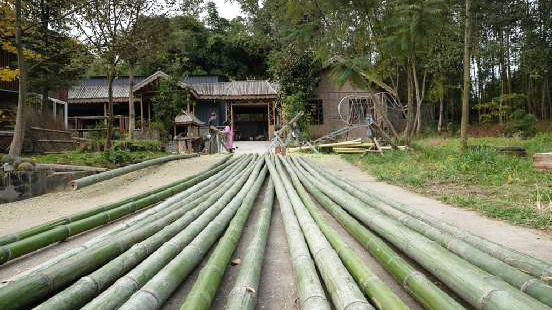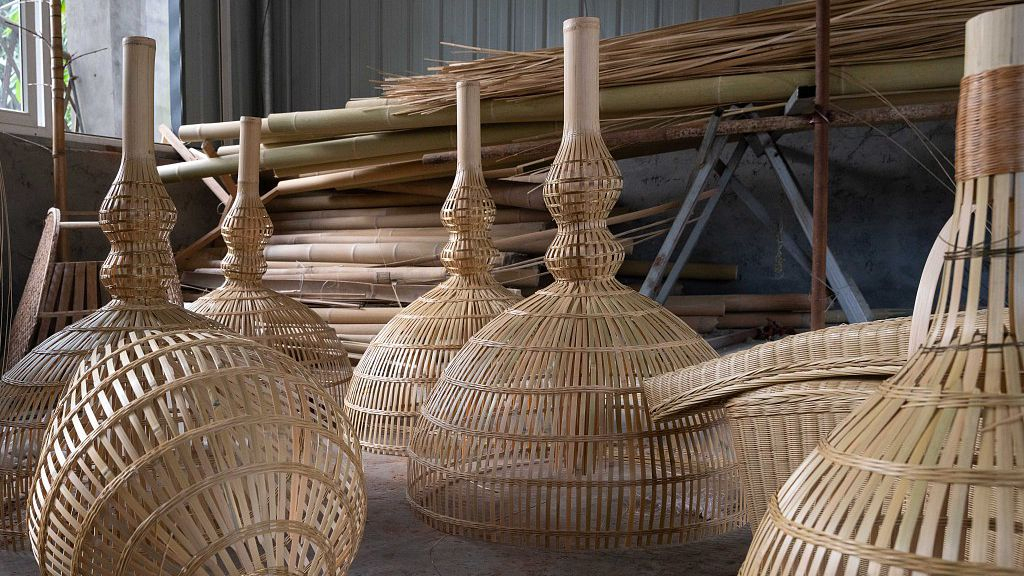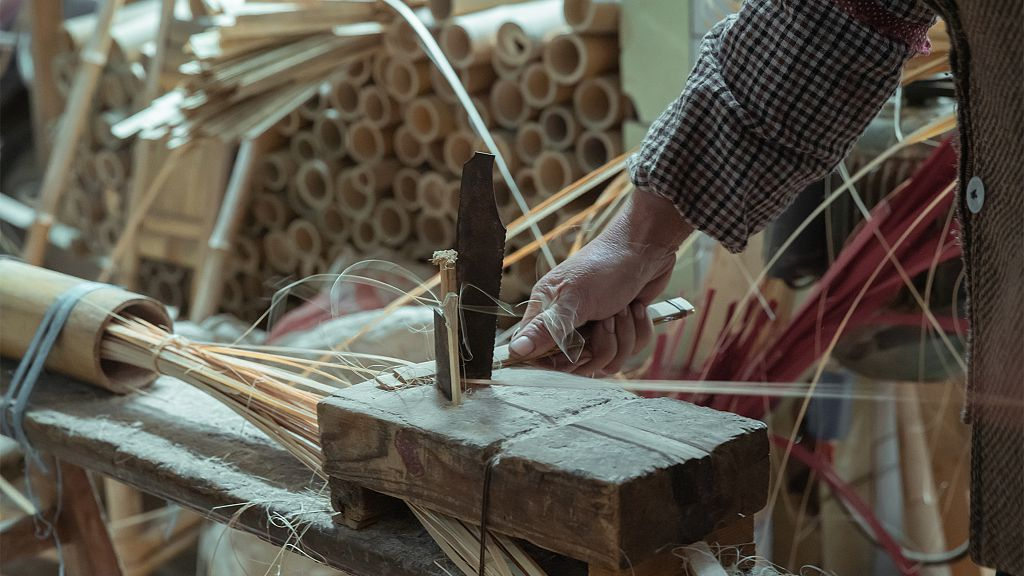
Destination
19:41, 20-Feb-2019
Architecture keeps art reaching toward sky
Qi Jie, Yang Ran
04:28

A building called Zhuli, which literally translates to “Bamboo Lane”, has attracted many visitors at the 16th Venice International Architecture Biennale. Most importantly, it reveals the issues and possibilities of the Chinese countryside.
Dao Ming Bamboo Village located in Chengdu, the capital city of southwest China's Sichuan Province, has practiced bamboo knitting for more than 2,000 years, and villagers have made a living from traditional bamboo techniques.
84-year-old Zhao Sijin is one of them. Zhao has a lot to say on keeping the old craftsmanship growing. "This has won the third prize. It was created by young people. The future of our bamboo knitting is still promising. The most important thing is that we used to knit toys for kids. Now what we make is smaller and more precise, and it has turned out to be a cute earring. It's all their creativity, which helps promote this craftsmanship and raise our popularity,” he said.
However, this bamboo craft wasn't always so popular.

Daoming Bamboo Knitting in Chengdu /VCG Photo
Daoming Bamboo Knitting in Chengdu /VCG Photo
Things changed in 2017 when designers from prestigious universities inspired the creation of a livable village with ecological aesthetics. And the newly renovated area is now known as the “Bamboo Village”.
“From an overall perspective, we can see that the two courtyards can be integrated into one. Through the integration of geometry, the two separate courtyards have become consecutive, allowing its function to coexist with human life," Yuan Feng, an architect from Shanghai Tongji University explains.
When art came into town, not only did it ignite the popularity of the village, but it also brought hope to villagers. 27-year-old Yang Longmei is the youngest inheritor of bamboo plaiting. She is also one of the designers of the “Bamboo Lane”, the facade that caused a stir at the 16th Venice International Architecture Biennale.
“Look, I just put it in. If this piece is broken, we will duplicate another one. Then plug the new piece into it. And the follow-up maintenance is also easy to do,” she says.

Daoming Bamboo Knitting in Chengdu /VCG Photo
Daoming Bamboo Knitting in Chengdu /VCG Photo
Daoming has become a model for the combination of culture and tourism, but, more importantly, young villagers are gradually concentrating on the study of bamboo craftsmanship.
Also, Daoming attracts artists, writers and even poets from all over China. After all, a return to pastoral life has long been an ideal of Chinese literary tradition.
“I want to set up a cultural public place, as a spiritual landmark. It's not easy to find a place like this in the countryside. I've brought urban civilization or other cultural elements to the countryside and I share them with local children. It's like cultural exchanges. They don't have to leave their home to learn more about urban life,” poet Ma Si says.
The development of the countryside across China is unprecedented in both its scale and its approaches. More importantly, this development anticipates a new solution grounded in China's unique conditions. Cultural practices, poetic dwellings, community reconstruction and even future exploration are significant issues that developers must take into serious consideration.
The motivation in Daoming is more than just the bamboo tradition or nostalgia for rural lands. People return to the countryside, the place where Chinese culture originated, to recover forgotten values and overlooked possibilities. China is building a future countryside that's on a path towards sustainability and the efficient use of natural resources.

SITEMAP
Copyright © 2018 CGTN. Beijing ICP prepared NO.16065310-3
Copyright © 2018 CGTN. Beijing ICP prepared NO.16065310-3